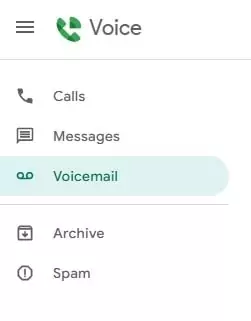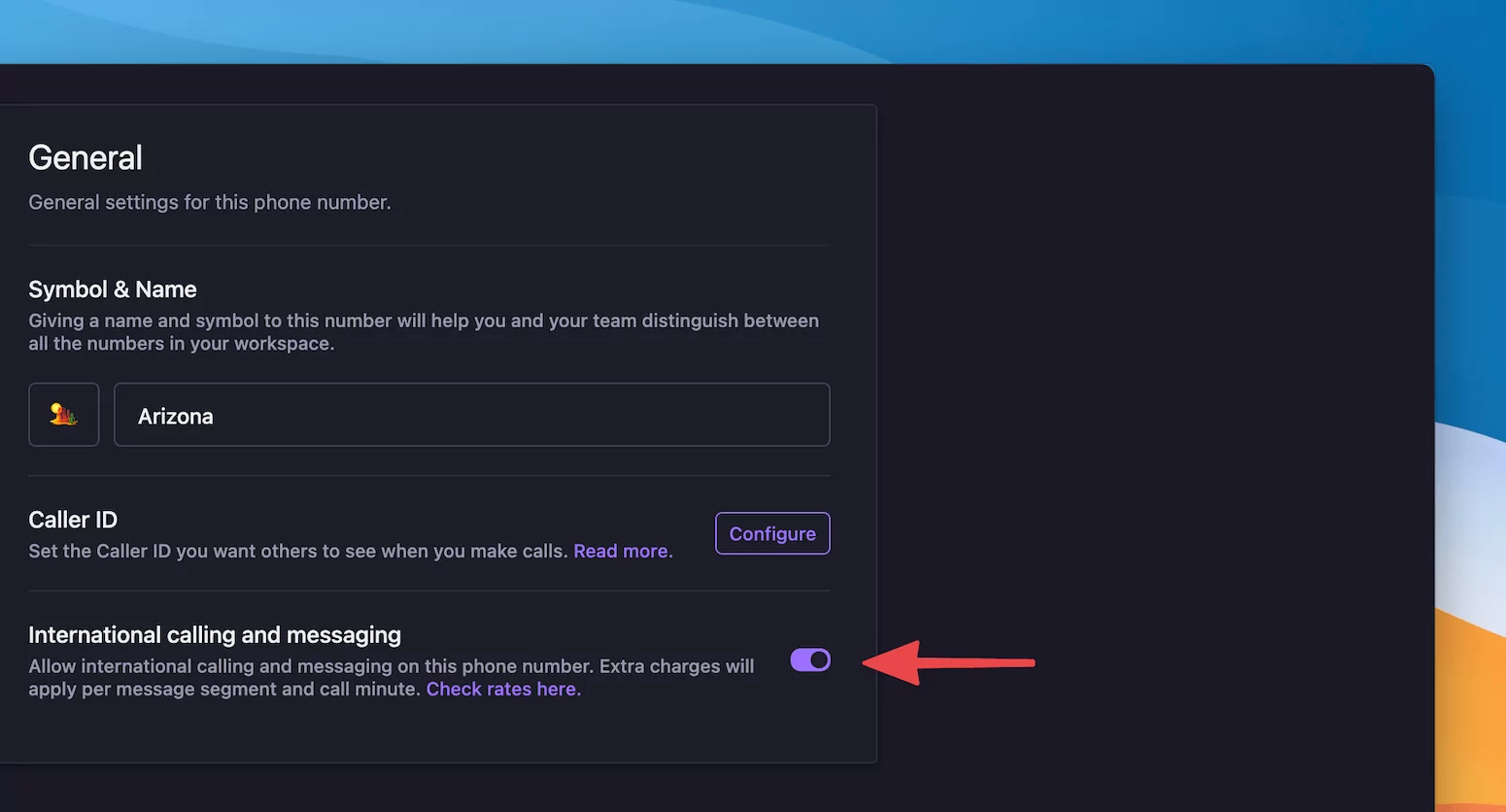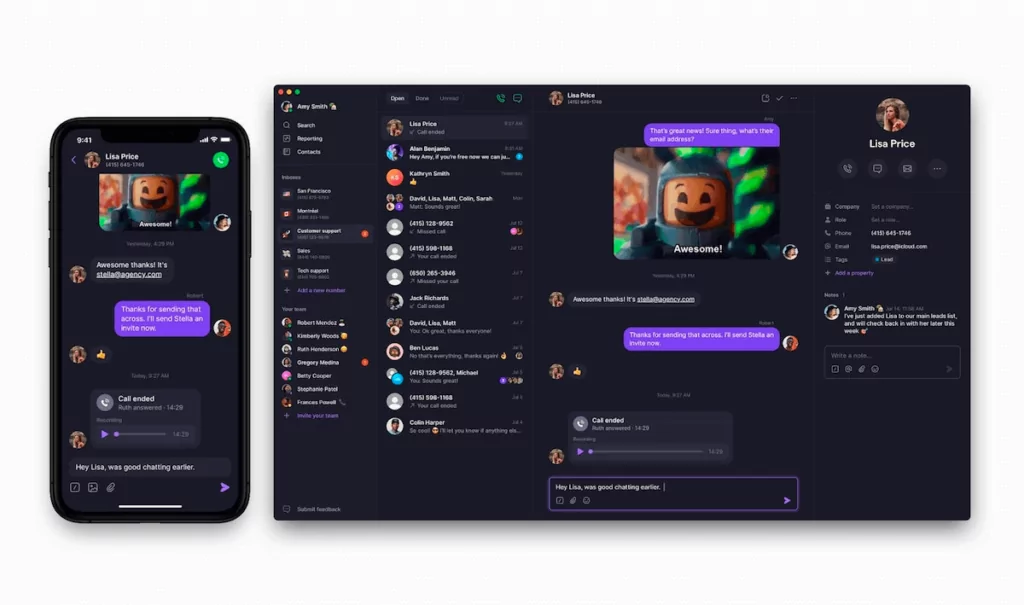

![]()
You can use Google Voice to make international calls and reach customers in different locations. However, there are some limitations to keep in mind, especially if you’re using a paid business plan.
We’re covering everything you should know about Google Voice international calls, including:
If you’re not happy with Google Voice’s limited international calling service, we’ll present an alternative VoIP service — starting at $15 per user per month — that you can use from almost anywhere in the world.
Contents hide
You can make international calls with Google Voice through your laptop or mobile device. As long as you have an internet connection, you can make calls straight from your browser along with Google Voice’s mobile app for iOS and Android. Just keep in mind there’s no Google Voice desktop app.
Here’s what you need to do to make international calls through your computer using Google Voice’s free plan or paid plan.
A free Google Voice account lets you make international phone calls using a Google Voice number.
There are six steps:
A few other important things to remember here: Google Voice’s free plan is only available in the US. Plus, the app wasn’t designed for business use. If you live overseas but want to make international phone calls with Google Voice, you may need to upgrade to a paid business plan: aka Google Voice for Google Workspace.
Google Voice for Google Workspace lets you reach international customers through its mobile app or your internet browser. Paid calling for international numbers is turned on by default, excluding premium numbers. Google Voice blocks calls to premium numbers that charge callers extra fees unrelated to long-distance calling such as pay-per-call services starting with area code 900.
Bottom line: This means you have to manually update your business number to set preferences for Google Voice calls.
There are three steps to call internationally from a Google Voice for Google Workspace number:
International calling rates with Google Voice for Google Workspace depend on where you live. If you have a US phone number and call someone overseas, you’re only charged the listed call rates.
However, if you’re located outside the US, you have to burn minutes from your phone plan. Depending on your mobile phone company, you may also pay extra roaming fees.
Plus, you should know not every country has the ability to make international calls with Google Voice. Even if you’re ready to deal with paying extra roaming fees to call internationally, only specific countries can purchase Google Voice for Google Workspace.
Let’s take a closer look.
Google Voice isn’t an option to use in many locations — even if you live in the US.
Google Voice for Google Workspace is only available in the following countries and regions:
Some countries can make international calls through Google Voice’s SIP link. With this SIP link, you use an existing cell carrier to make calls. If you initiate an international call with your Google Voice number, it goes towards your cell plan’s minutes or you’re charged any international calling fees depending on your subscription.
This is the only way you can make international calls if you live in:
You need to upgrade your Google Voice plan to access Google SIP link. First, you have to upgrade to a Standard subscription ($26 per user per month) or a Premier subscription ($36 per user per month) to connect phone numbers from your carrier to Google Voice. Then, you have to pay separate fees for SIP Link Standard or SIP Link Premier for an undisclosed amount. You still need to pay international calling rates on top of this, which might be expensive if everyone on your team needs to make international calls. However, Google Voice’s posted call rates do not apply to users in SIP Link countries — meaning the per-minute prices may be much higher.
You can only text internationally to one other country (Canada) with Google Voice if you live in the United States. As long as you’re a US customer, you can use both Google Voice’s free version and Google Voice for Google Workspace to send text messages to Canadian and US numbers.
If you live in any country outside the US, you can’t send text messages at all — and you certainly can’t send international texts. This makes it difficult to answer customer questions or follow up without scheduling a paid international call.
There are a few other limitations to texting through Google Voice. Even if you are a US customer, remember the free version of Google Voice wasn’t built for business use. You won’t be able to send group texts to more than seven people, and you can’t use any integrations to automate touchpoints with your customers.
If you need to send lots of SMS messages to customers or clients, Google Voice for personal use may throttle your limit and mark your messages as spam.
Upgrading to Google Voice for Google Workspace won’t remove all of these texting limitations. Even on the paid business plan, Google Voice may stop you from texting if too many users report your messages. You could have your bandwidth reduced or suspended entirely, meaning you won’t be able to send SMS at all.
International calling with Google Voice is limited at best and restrictive to companies located outside the US. However, this only scratches the surface. There are other dealbreakers you can run into that confirm this phone service might not be a good fit for your business.
Let’s look at a few drawbacks below:

Following up in Google Voice takes more time as Voice separates all points of contact with your customers into separate inboxes. Calls, texts, and voicemails are sent to their own folders, meaning there’s no way to see all your customers’ interactions in the same place.
That’s not the case for VoIP systems like OpenPhone. Every call, text, or voicemail from a specific customer is in one thread. This means you can immediately see all their points of contact and address their concerns with a record of past communications.

You can use Google Voice for personal use to make phone calls for free. But if you’re a small business owner, you need to purchase a paid plan from Google Voice for Google Workspace.
The Starter plan is $16 per user per month when you factor in you must have a Google Workspace account (an extra $6 per user per month). You can only have up to 10 users on the basic plan before needing to upgrade to the Standard plan ($26 per user per month). The Standard plan and Premier plan claim to support an ‘unlimited’ number of users. However, if you want to add more than 50 users, you have to pay an upfront fee.
These numbers add up quickly for small businesses wanting to get the most bang for their buck.
Google Voice call recordings are only available to paid users if you upgrade. The Standard plan ($26 per user per month) only provides ad-hoc call recording. This means you need to manually click ‘Record’ every time you make a call and only once all participants have joined.
Want to automatically record your phone calls? You need to upgrade again to the Premier plan ($36 per user per month). This could get expensive fast, especially if you’re only paying extra for one feature.
Google Voice doesn’t support toll-free numbers at all. If you already have a toll-free number and want to port it to Google Voice, you need to look for a Google Voice alternative.
Thankfully, VoIPs like OpenPhone offer full support for North American toll-free numbers. And comparing Google Voice business vs personal, porting in your existing number is free on their paid plans.
Texting from Google Voice is already limited, especially if you’re located outside the US. But besides the limitations on group texting and international SMS, you also won’t be able to send auto-replies through Google Voice at all. There’s no way to instantly respond to customers if you’re out of the office, which could frustrate your contacts and make you look unprofessional. Plus, you can’t set up integrations with third-party apps to automate specific touchpoints (like sending an appointment reminder after a customer completes a webform).
Which leads to our next point —
Google Voice only integrates with other Google apps, including Calendar, Gmail, and Hangouts. It doesn’t connect with other tools outside of that.
If you’re using Salesforce to keep track of customers, you have to manually log information from your Google Voice account to your CRM.
Have an existing Slack account? You can’t connect the two systems together. This could slow down your team and add more work to your to-do list, especially if you work with lots of other team members.
Speaking of working together, Google Voice has limited collaboration options that can be stifling to growing teams. You won’t be able to message team members internally without using a separate Google app (like Chat). Plus, you can’t tag them in specific conversations or delegate tasks in-app — you have to send an email or use a separate tool to get in touch.
The biggest limitation? No shared phone numbers. You can’t put multiple users under the same phone number, which means you can’t split responsibility for incoming calls. You can upgrade to the Standard plan to unlock ring groups, which rings multiple devices when a customer calls. However, you can only set business hours for specific phone numbers. You can’t set up a work schedule for individual team members, meaning there’s no way to know if an agent’s available or not.

Everyone can see the same messages in the same inbox, and can tag each other inside invisible threads underneath customer calls, texts, or voicemails. That way, everyone can work as a team to manage daily tasks and build better relationships with customers.
Teammates can also be on separate calls at the same time with shared numbers.

Get better control over what specific numbers in your workspace can make international calls. As a manager, any owner or admin user in your team’s workspace can add international credits right from the OpenPhone app to easily keep track of how much you’re spending.

Unlike Google Voice, there’s no limit to the amount of international credits you can add. You can even set up auto-charges so you don’t run out in the middle of a call, which takes one more task off your to-do list.
OpenPhone offers you a hundred of ways to automate specific workflows and repetitive tasks, giving you back hours for other important responsibilities.
You can use auto-replies to instantly address customers if you miss incoming calls or receive messages outside of your working hours. You can also use scheduled messages to reach international customers during more appropriate times of day. If you want to address customers more consistently as a team, you can save templated snippets and quickly send them.
OpenPhone’s platform integrates with webhooks and third-party integrations including Slack, Salesforce, HubSpot, and Google Contacts. We also integrate with Zapier, which unlocks 5,000+ other integrations you can use to save time on specific touchpoints.
All text messages, call recordings, and voice messages with a contact are in a single view, which means you can review the history of any conversation in one place instead of having to jump between inboxes. With shared numbers, everyone on your team can view the same contact history and follow up together with less confusion.

You can make international calls through OpenPhone in 15 minutes or less. Want to try out OpenPhone first? Sign up for a seven-day free trial to get started.